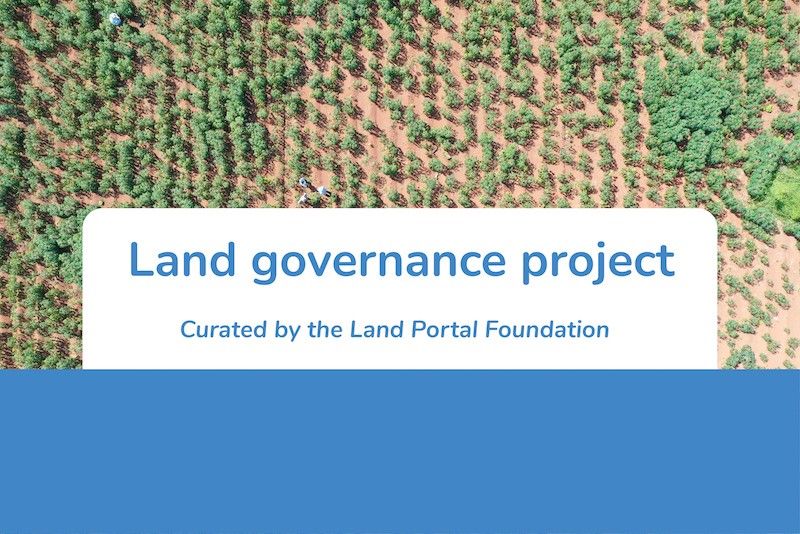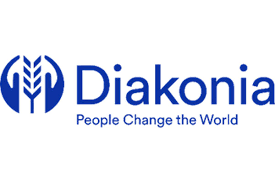Community / Land projects / Sustain Eco:Sustainability & Inclusion Strategy for Growth Corridors in Tanzania - SUSTAIN: Sustainability and
Sustain Eco:Sustainability & Inclusion Strategy for Growth Corridors in Tanzania - SUSTAIN: Sustainability and

€4588629.376
12/22 - 09/26
Active
This project is part of
Implementing Organisations
Donors
Data Providers
General
The overall objective of the intervention is to foster ecosystem stewardship in government, business and local communities to equitably balance priorities for sustainability and growth, in other words taking ecosystems into account by all stakeholders while balancing environment and livelihoods. The intervention is largely a capacity building one that provides training, facilitates consultations and provides incentives for the beneficiaries. This will be achieved through three outcomes: Outcome 1: Coordination strengthened amongst governance structures for sustainable and inclusive management of natural resources Outcome 2: Integrated landscape management improves ecosystem health and generates inclusive business and livelihood opportunities, especially for women, youth and vulnerable groups. Outcome 3: Investment in the protection and restoration of ecosystems and their services strengthens climate resilience for people and ecosystems. The impact will be measured via indicators of healthy ecosystems and biodiversity conservation (environmental and biodiversity benefits) and of improved human wellbeing (socio-economic benefits/contribution to multidimensional poverty reduction). The outcomes will be measured through the proportion of land under integrated and inclusive governance and management, area and percentage of targeted landscape with formalized land tenure rights, area and percentage of land under promoted solutions for improved landuse, management and conservation, number and types of innovative business initatives based on sustainable use and management of land and natural resources, area of land under restoration and the volume of investment leveraged for forest and landscape restoration, biodiversity conservation and low carbon projects. The final adjustment of the indicators and establishment of baseline figures will be established during the project inception period.
Objectives
The intervention goal is: Ecosystem stewardship leads to healthy ecosystems, biodiversity conservation and prosperous communities in Tanzania. There are three expected outcomes: Outcome 1: Coordination strengthened amongst governance structures for sustainable and inclusive management of natural resources. Outcome 2: Integrated landscape management improves ecosystem health and generates inclusive business and livelihood opportunities, especially for women, youth and vulnerable groups. Outcome 3: Investment in the protection and restoration of ecosystems and their services strengthens climate resilience for people and ecosystems. Sustain Ecos goal has three principal components: - Ecosystem stewardship For growth to be possible in the long run, the services necessary for human well-being and thriving economies need to be secured and the ecosystems which underpin these services protected and enhanced. Ecosystem stewardship is engaging stakeholders to ensure that ecological systems are able to cope with shocks and stresses as well as to sustain the transformations needed to adapt to climate change whilst striving for social prosperity and growth at scale. - Equitability Local communities are key to ensuring pathways for growth that are sustainable and inclusive. Equitability encompasses community resilience to climate change, social inclusion as well as sustained and sustainable economic growth for local communities, considering poverty in all its dimensions and focusing on leaving no one behind. Equitability also encompasses striving for gender balance and equity in public and private institutions responsible for land and water planning and management. - Balanced sustainability and growth at scale to break the vicious cycle of poverty and ecosystem loss inherent in current economic models, a stark departure from business-as-usual is necessary. For this to be possible, environmental and social considerations must be embedded into businesses and sectors with the highest green growth potential and coupled with replication and scale up of sustainable business models (especially low-emission alternatives). The desired changes are that: Local communities, especially vulnerable women and youth, and smallholder farmers have improved access to knowledge, finance and capacity, being therefore able to derive sustained and sustainable incomes; Businesses in selected sectors integrate ecosystem values and strengthen social inclusion in their operations and value chains; Institutional structures and governance systems have improved coordination and integration enabling sustainable and inclusive management of natural resources; Innovative financing streams recognise the value of Nature-based Solutions for balancing growth with ecosystem resilience and social inclusion, encouraging their uptake; Critically important ecosystems are protected, conserved, and restored thereby retaining the services necessary for economic growth and social prosperity, and the protection of biodiversity including land health (e.g. soils and soil structure, groundwater). The impact will be measured using indicators that are suggested in the project proposal but where the list may be adjusted during the first three months of the project when baselines will also be established. The indicators (see a full list in the logical framework in annex 1 of the proposal) include: - reduction of the total area (ha) and percentage of ecosystems in the landscape that are degraded - reduction of forest loss/rate of deforestation - status of soil and water - changes in household income, data gender disaggregated - diversification of livelihood opportunities - reduction in land and natural resource related conflicts - proportion of land under integrated and inclusive governance and management - total area (ha) and percentage of the landscape with formalized land tenure rights - number and type of integrated local governance structures for natural resources - number of natural resources governance structures for natural resources established and implemented with Sustain Eco support - number of women in leadership roles in natural resource governance mechanisms - individuals supported to obtain Community Custsomary Rights of Occupancy (CCROs) by gender - number of village land use plans that integrate biodiveristy considerations developed and implementation facilited - number of water catchment management plans established/strengthened - number of farmers who have received training and support through farmer field schools and extension services to improve cliamte smart agriculture practices and technologies - number or percentage of local artisans and small businesses using inclusive cook stove technologies - number of businesses and cooperatives supported to implement, monitor and report on Inclusive Green Growth (IGG) principles and best practices - number of farmers engaged in implementing improved agrochemical waste mangement practices - number of banking sector actors and financial institutions engaged in adopting the Tanzania Sustainable Finance Principles - area (ha) and percentage of land in targeted landscape restoration - volume of investment leveraged for forest and landscape restoration, biodiversity conservation and low carbon projects - number of Village Nature Reserve Committees (VNRC) conducting participatory biodiversity monitoring (the Embassy assesses the involvement of local people in such activities key. Offering alternatives to allow people to conserve is also of utmost importance) - number and type of prevention and mitigation measures to address bushfires implemented - number of nurseries and woodlots established - number of communities where members have been supported to engage in communal agroforestry systems and practices - number of Payment for Environmental Services (PES) schemes established and modelled for water use In other words a wide range of results/impacts are expected. It is also likely that people in the landscapes and officials will get hands-on experience of the benefits of democratic governance, transparency and accountability. The ability of the partnership to deliver changes as described in the proposal was confirmed during the Embassy's visit to Sustain 1 in December 2020 where the Embassy could see examples in the Sumbawanga landscape of how consultations between different landusers and local officials in combination with minor infrastructure improvement had resulted in efficient and sustainable use of water that satisfies needs of users both upsteam and downstream without having a negative impact on the environment. During the same visit the Embassy saw examples of how local landuse planning reduced pressure on natural resources and led to conservation of areas of concern from an environmental perspective. Women in the field also explained how they had benefitted from a gender perspective and suggested that one way forward on gender equity would be to raise this topic and seek more interaction with older officials, who based on their experience, are more understanding and receptive.




